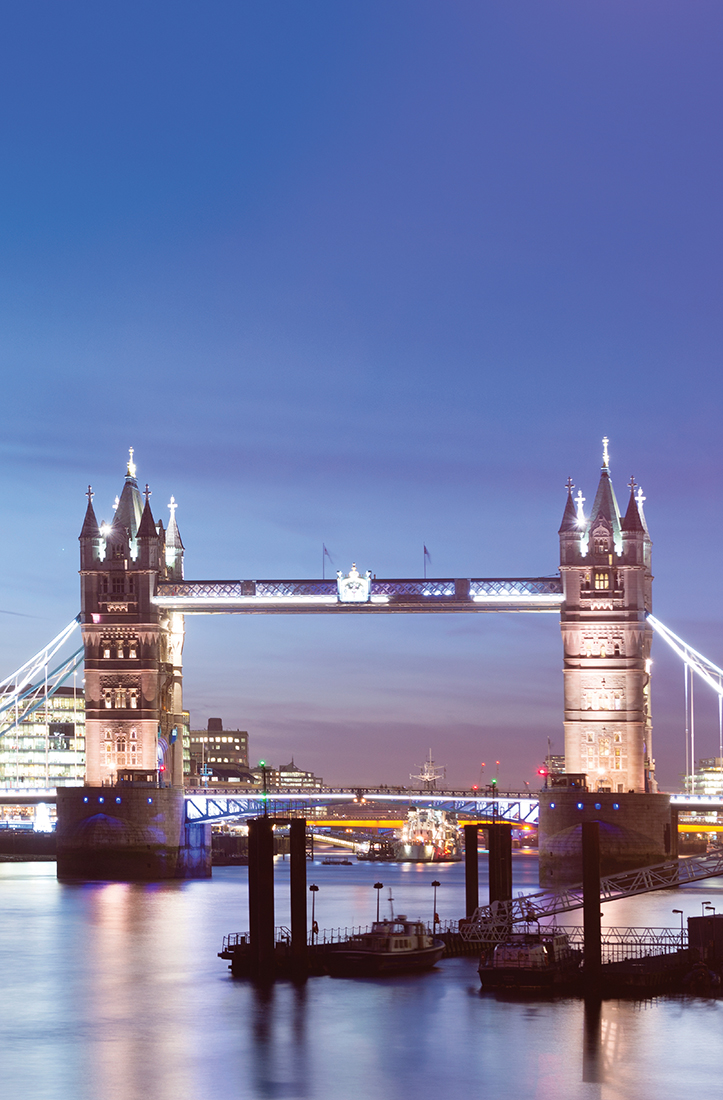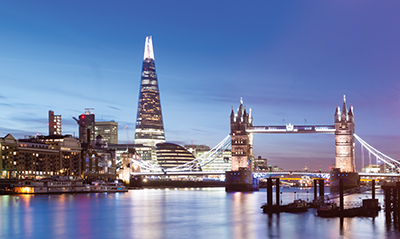 NINETEEN YEARS AGO when my husband and I moved to Novato, our oldest daughter had just turned one and I was quite pregnant with our second. The decision to buy our house was spur of the moment. We were certain this was the type of wide-open spot where we wanted to raise our family, but to get the place we had to put in an offer the same day we looked at it, so we made the offer with no notion of where our children would attend school. Little known to us, just as we were moving into our home, some local parents were busy writing the charter for what would soon become the Novato Charter School (NCS), and that little school was destined to play a significant role in our lives. The day we walked our eldest to her first class marked the beginning of a new chapter, shared with a group of NCS parents who would become our dear friends.
NINETEEN YEARS AGO when my husband and I moved to Novato, our oldest daughter had just turned one and I was quite pregnant with our second. The decision to buy our house was spur of the moment. We were certain this was the type of wide-open spot where we wanted to raise our family, but to get the place we had to put in an offer the same day we looked at it, so we made the offer with no notion of where our children would attend school. Little known to us, just as we were moving into our home, some local parents were busy writing the charter for what would soon become the Novato Charter School (NCS), and that little school was destined to play a significant role in our lives. The day we walked our eldest to her first class marked the beginning of a new chapter, shared with a group of NCS parents who would become our dear friends.
This little backstory was very much on my mind as my husband and I boarded a plane for England last June. We were on our way to meet these friends, many of whom we had not seen for some time because our children are now in or on their way to college, and our lives have moved us in different directions. The long flight gave me an opportunity to grow nostalgic for our years raising children together. As we built gardens, led field trips, and spearheaded art projects, we discovered we had a lot to share with each other. Among us were a musician, a music aficionado, two winemakers, a fine art photographer, an artist/furniture designer, a writer and an engineer. We found in each other an enthusiasm for the arts and a penchant for adventure — exactly the combination that would lead us, a decade later, to plan this trip. We would meet in England to attend the London Symphony Orchestra’s performance of Beethoven’s Ninth Symphony on the night of the summer solstice.
It was Friday afternoon when we all arrived in London, with several days to explore our English environs before the concert. Two of the men in our group hail from Great Britain and still have family and friends across the country, so we were invited to indulge in a classic British tradition: the weekend country party. Luggage in tow, we made our way from Paddington Station to London Euston Station, spending just enough time peering out the back of a black cab to get a sense of the pulsing creativity and industry that was in store for us upon our return to London. Then we ran down the queue to make the train for Staffordshire.
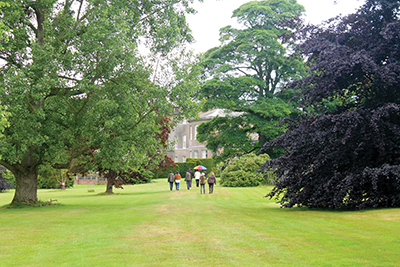
The grounds at Thorpe Constantine.
We had been invited to visit the historic Thorpe Constantine Estate outside the town of Tamworth, an hour-and-a-half north of London. While there we would also travel to Lichfield, the childhood home of our winemaker friend Tom Stubbs (of Stubbs Vineyard in Petaluma). These village names meant little to me as we boarded the train, but speeding north into the countryside, past fields of ripe wheat lit by the late evening sun, I began to feel part of something distinctly romantic and Downton Abbey–esque. The European duality of living a modern existence among remnants of history feels particularly relevant in Great Britain, where a state-of-the-art Virgin train dropped us near a friend’s home built in 1651. A product of baby-state California, I am smitten with antiquity and admire the Brits’ nonchalance as they straddle history and modernity in their daily lives.
Thorpe Constantine is now a private home, with offices for lease in the former stables and fishing ponds that host regular tournaments, but it is easy to envision the bustle of the village, with horses, servants and parishioners moving to and fro about the grounds in preparation for the annual hunt. We indulged in an evening meal derived largely from the estate’s kitchen garden, including young potatoes, a local artisanal goat cheese (Innes) and a raspberry trifle for dessert, before attempting to sleep off our jet lag. The next day we set off for nearby Lichfield, with no preparation other than Tom Stubbs’ casual mention of a cathedral.
It was difficult to imagine the sight we would behold in the center of Lichfield, a smallish city of about 33,000, unremarkable at first glance. The Lichfield Cathedral, built between 1195 and 1340, is made of sandstone, with a central spire reaching 252 feet. This was a holy site of martyrdoms from the Roman period after Julius Caesar invaded Britain in 55 B.C., and the original structure was built in 700 B.C. to house the bones of Anglo-Saxon missionary St. Chad. The medieval cathedral is considered one of the oldest places of Christian worship in England. A surprise both inside and out, especially in the context of its humble surroundings, it is as grand as many of the most renowned European cathedrals. We sat in the pews admiring towering works of stained glass and listening to the choir practice before meandering back outside to explore the cobblestone streets of the nearby historic district.
Tucked away just across the street from the cathedral is the home (now a museum) and peaceful interior garden of Erasmus Darwin, a polymath physician, poet and naturalist who was the grandfather of Charles Darwin. The less vaunted Erasmus published theories on evolution — in verse, no less — that appear to have laid the groundwork for his grandson’s scientific legacy.
Just a stone’s throw away from Erasmus’s home is the well-preserved center of old Lichfield, with 230 listed historical sites, most notably the Samuel Johnson Birthplace Museum and Bookshop. Johnson, who published the first English-language dictionary, is one of the most important figures in the history of English letters, a man of extraordinary intelligence who was posthumously diagnosed with Tourette’s syndrome. Tom Stubbs, who shares an alma mater with Johnson, played tour guide, educating us about the superstars of his childhood home. It was a thrill for us born-and-bred Californians to see our old friends in their native environments, and it made me appreciate the divide — both cultural and physical — they had crossed in moving to the States.
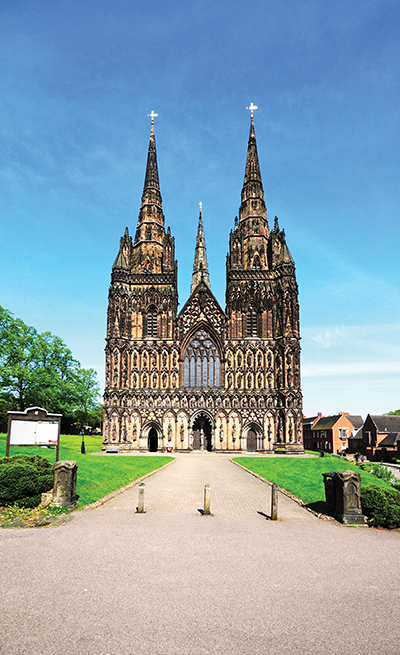 By the time we stepped out of the Euston station the next day, I also appreciated the divide between the British countryside and modern London. It feels as if the whole world has convened on London these days. Each new neighborhood is pounding with redevelopment energy. An international assortment of artists, chefs, financiers and oil magnates has gathered here, along with a lot of beautiful young people who seem to be taking advantage of both the bustling economy and the street-side pub culture on summer evenings. Two decades ago when I last spent significant time in London, the only culinary coup was finding decent fish and chips, and the contemporary architecture was decidedly uneventful. Now it is difficult to decide where to eat in London given the many world-famous chefs offering sublime meals in gorgeous restaurants, and if you stand next to the Thames and slowly spin full circle, you will see a series of radical structures. The city now boasts some of Europe’s most interesting postmodern architecture, labeled with nicknames like the Shard, the Gherkin, the Cheese Grater, the Walkie-Talkie and the Lipstick.
By the time we stepped out of the Euston station the next day, I also appreciated the divide between the British countryside and modern London. It feels as if the whole world has convened on London these days. Each new neighborhood is pounding with redevelopment energy. An international assortment of artists, chefs, financiers and oil magnates has gathered here, along with a lot of beautiful young people who seem to be taking advantage of both the bustling economy and the street-side pub culture on summer evenings. Two decades ago when I last spent significant time in London, the only culinary coup was finding decent fish and chips, and the contemporary architecture was decidedly uneventful. Now it is difficult to decide where to eat in London given the many world-famous chefs offering sublime meals in gorgeous restaurants, and if you stand next to the Thames and slowly spin full circle, you will see a series of radical structures. The city now boasts some of Europe’s most interesting postmodern architecture, labeled with nicknames like the Shard, the Gherkin, the Cheese Grater, the Walkie-Talkie and the Lipstick.
The Shard, an 87-story neo-futuristic jagged- peaked skyscraper, has become the most notable feature of the London skyline and the tallest building in the European Union. It has a magnetic pull, so we started our first day back in the city with brunch at the elegant Ting Restaurant on the 35th floor. This restaurant is the place to get your bearings, as it affords a 360-degree view of just how massive and impressive London has become, and it is fun to count the construction cranes littered across the cityscape. After brunch, Beth Moon, whose photographs of ancient trees have enchanted the world of late, rushed off with a group to the Tate Modern museum, just a half mile away. Others decided to visit the British Museum to peruse the artifacts from around the world that colonial Britain amassed, some sparking ongoing controversy regarding repatriation.
We spent the rest of the afternoon like teenagers, poking around Chelsea and Sloane Square. Three of us broke off to follow a lead to the city’s “best” consignment shop at Sign of the Times on Chelsea Green. The place is rife with Prada, Chloe and Alexander McQueen, but we spent most of our time downstairs working our way through the more practical ready-to-wear. Next we made a pilgrimage to Lower Sloane Street to sample the work of chocolatier Gerard Coleman at Artisan du Chocolat. Followers claim Coleman is single-handedly responsible for the international salted caramel craze.
The dining options — classic, innovative farm-to-table, creative fusion — are overwhelming, which is why London has replaced Madrid as the European foodie city. On our first night, local friends guided us to chef Claude Bosi’s Hibiscus, which boasts two Michelin stars. His influence is clearly French and designed around fresh produce. The vin jaune and chervil sauce on Herefordshire snails — and we can agree that escargot are all about the sauce, right? — was rich but not heavy. Also memorable was the Devonshire crab with elderflower and new-season almond sauce. For dessert we shared artisanal cheeses from cheese-monger Bernard Antony’s cellar.
The next day my friend Kathy, the artist and furniture designer, and I acted on a hint from another local friend about set-price lunches. A number of London’s Michelinstarred chefs offer an affordable daytime menu of three, five or seven courses, and reservations are usually attainable. Hélène Darroze was recently named the Veuve Clicquot Best Female Chef in the World, so her eponymous restaurant at the Connaught in Mayfair was the obvious choice. We used what looks like a small wooden game board with labeled marbles to pick our course choices. Staying with the playful spirit of adventure, we ordered what appeared exotic — skate with fennel, cockles and samphire and duck with Tokyo turnip, rainbow radish and mānuka honey — and found ourselves equally enchanted by the flavors and presentation of each dish. We each spent less than $75 and left feeling we had just had one of the best dining experiences of our lives.
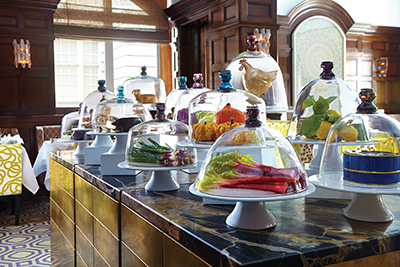
Dishes at Hélène Darroze.
The beauty of London is that you can revel in a Michelin-starred meal in Mayfair one moment and play hipster among the artists and trendsetters of Soho, or Portobello, or Kensal Green, or Notting Hill Gate the next. I woke early one morning and made my way on foot through the Bunhill Fields cemetery and down a few narrow side streets until it was obvious I had arrived in the current “it” neighborhood of Shoreditch. Maybe it was the “Pizza N’ Fashion” sign a young woman set up in front of her pop-up shop, or maybe it was the TreeXOffice in Hoxton Square — a geometric shared working space with eight cubicles, built around a tree — but it became clear I had reached a neighborhood oozing with edgy creativity.
Just off Hoxton Square I wandered into the Breakfast Club, a riot of color, international hipness and the smell of fresh-baked sweet rolls. If you want to mingle with the young crowd who will likely define the aesthetics of London’s future, take a seat here, order a cup of coffee, and watch and listen for a while.
That same evening we savored the epitome of London’s farm-to-table craze at Skye Gyngell’s lovely Spring Restaurant in Somerset House. A Tudor palace originally built for the Duke of Cornwall in 1547, this neoclassical building between the Thames and the Strand is now a creative hub, redeveloped by privatepublic partnership, hosting everything from live performance and outdoor film screenings in summer to gallery shows and ice skating in winter. After dinner at Spring we wandered into the courtyard, where stagehands prepared for a dance performance that would take place before the 500 fountains.
Finally, the solstice, the day of our concert, arrived. We met early in the evening at the Jugged Hare pub, just across from the venue, for a pint before the show. We marveled at The Barbican Centre across the way, a massive concrete structure that is a prime example of the brutalist (“raw”) architecture of the ’60s and ’70s. The masses of cement were not what I had imagined for the setting of one of classical music’s most humane works, but inside, a gently sloping wooden floor leads to an intimate concert hall, making up for the cold exterior. As the musicians entered we were so close it felt we could pat them on the back. When Bernard Haitink, the lively 86-year-old conductor, motioned for the first note, we collectively exhaled and settled in for what we knew would be a symphonic journey.
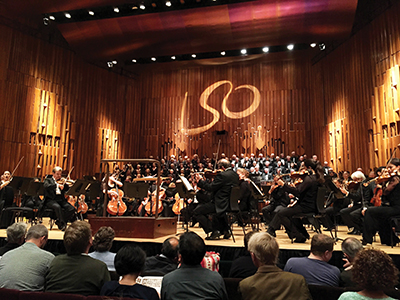 And a journey it was. Beethoven’s piece, which he wrote between 1812 and 1824, enveloped and carried us across the joy, sorrow, longing and exaltation of a lifetime. At the beginning of the fourth movement, when the voices of the choir joined the orchestra with the lyrics from von Schiller’s poem Ode to Joy, the hair on my arms stood on end. According to the program, the poem lauds “the joys of fellowship, the happiness of married life, the wonders of nature and the universe and the eternal mystery of divine love.” I looked at my husband and our dear friends sitting beside us, the people with whom we shared so many poignant years. In that moment I felt both the sharpest ache of time — our children growing and our stories evolving — and the deepest gratitude for the fortune and fullness of the moment.
And a journey it was. Beethoven’s piece, which he wrote between 1812 and 1824, enveloped and carried us across the joy, sorrow, longing and exaltation of a lifetime. At the beginning of the fourth movement, when the voices of the choir joined the orchestra with the lyrics from von Schiller’s poem Ode to Joy, the hair on my arms stood on end. According to the program, the poem lauds “the joys of fellowship, the happiness of married life, the wonders of nature and the universe and the eternal mystery of divine love.” I looked at my husband and our dear friends sitting beside us, the people with whom we shared so many poignant years. In that moment I felt both the sharpest ache of time — our children growing and our stories evolving — and the deepest gratitude for the fortune and fullness of the moment.
IF YOU GO
STAY
Just across the way from the Barbican Centre is the Montcalm Hotel at The Brewery London City, a boutique five-star hotel located in the original 18th-century Whitbread Brewery. Enjoy a pint or a meal before the show at The Jugged Hare, also in the Brewery. themontcalmlondoncity.co.uk, thejuggedhare.com
If you prefer proximity to the theater district, the Waldorf Hilton is an elegant hotel in a palatial historic building at Covent Garden, including an expansive LA Fitness club downstairs, with guest access. waldorfhilton.co.uk
BREAKFAST AND BRUNCH
Get your bearings at brunch — pick a table overlooking the city at Ting in the Shangri-La Hotel, situated on the 35th floor of the The Shard. ting-shangri-la.com
For a casual comfort food breakfast with London’s hipsters and creatives, stop by the colorful and quirky Breakfast Club in Shoreditch. thebreakfastclubcafes.com
LUNCH
Reserve ahead and try the Lunch Formula menu at world-renowned French chef Hélène Darroze’s two-Michelin-star restaurant at the Connaught in Mayfair. the-connaught.co.uk/mayfair-restaurants/helene-darroze
DINNER
For high-end farm-to-table dining, try Spring Restaurant in the Somerset House, an arts and cultural center on the Strand above the Thames. springrestaurant.co.uk/about/spring
Try chef Claude Bosi’s Hibiscus, another Michelin starred restaurant, for innovative and locally sourced modern French cuisine. hibiscusrestaurant.co.uk
FOR FUN
Sign of the Times in Chelsea offers designer labels at a fraction of the original price. Pop downstairs for casual wear. signofthetimesdressagency.com
Sample the chocolate that has captured the hearts of London’s famed chefs at Artisan du Chocolat. artisanduchocolat.com
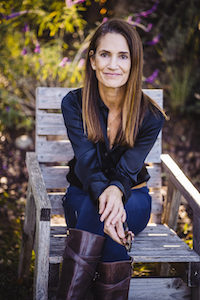
Kirsten Jones Neff is a journalist who writes about all things North Bay, with special attention to the environment and the region’s farmers, winemakers and food artisans. She also works and teaches in school gardens. Kirsten’s poetry collection, When The House Is Quiet, was nominated for the Northern California Book Award, and three of her poems received a Pushcart nomination. She lives in Novato with her husband and three children and tries to spend as much time as possible on our local mountains, beaches and waterways. For more on her work visit KirstenJonesNeff.Com.

